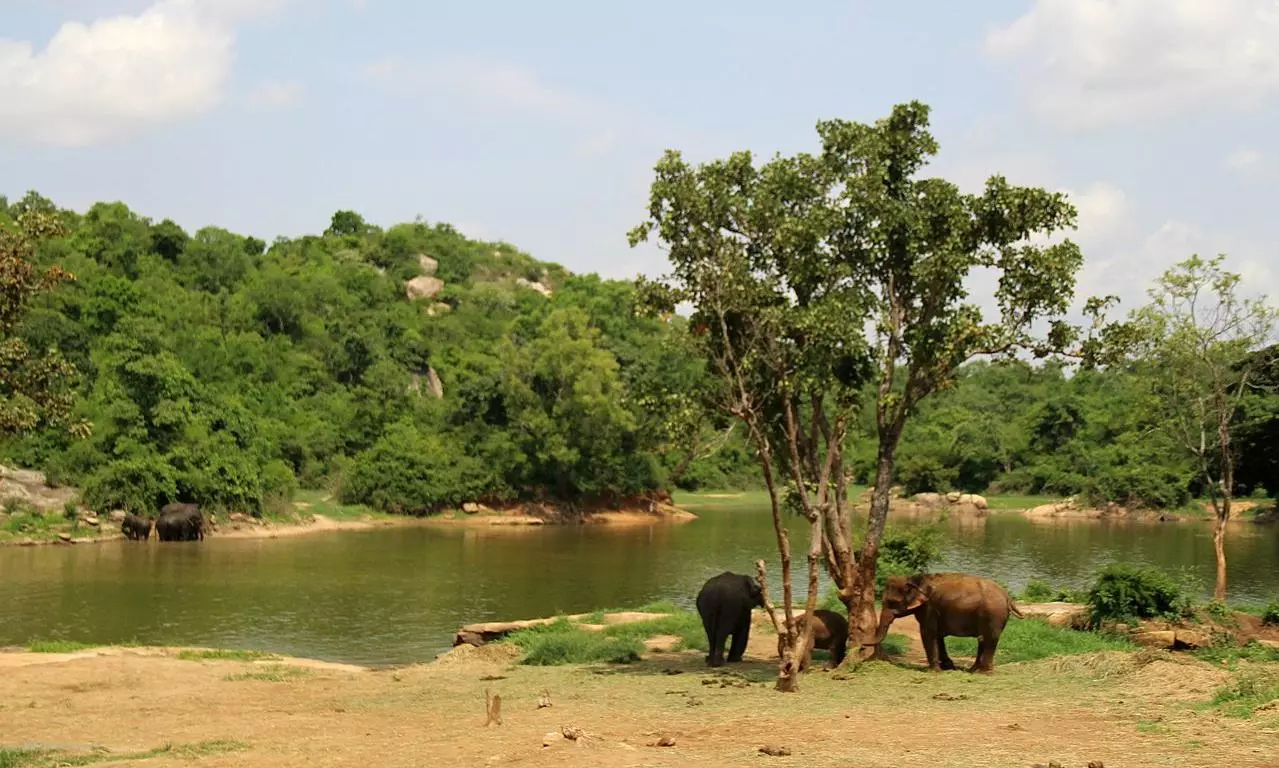
Karnataka: Activists take up Bannerghatta cause as flyover threat looms
The NHAI has apparently got a clearance from the National Board of Wildlife even though the project will eat into 27 acres of core area and 14 acres of buffer

Bannerghatta National Park, a sanctuary with diverse wildlife in Bengaluru, is facing a grave threat as the National Highways Authority of India (NHAI) plans to construct a six-lane flyover within its boundaries, prompting wildlife activists to start an online campaign seeking a reversal of the decision.
As part of the Satellite Township Ring Road (STRR), the project is slated for a 3.85-km stretch connecting Bannerghatta and Jigani Road on the outskirts of Bengaluru, raising substantial environmental and wildlife conservation concerns.
1,288 trees under threat
The project will not only threaten the safety of the rich biodiversity of the park, which is home to elephants, leopards, and tigers, but also cause the felling of 1,288 trees. Apparently, the NHAI has got a clearance from the National Board of Wildlife (NBWL) even though the project will eat into 27 acres and 18 guntha of the core area and 14 acres in the buffer zone of the park.
An NHAI officer, on condition of anonymity, told The Federal that the work on the BNP section would commence after clearance from the Forest Advisory Committee (FAC), ensuring strict adherence to specified conditions. The FAC will comprehensively assess the project’s impact on the forest ecosystem, evaluating land diversion in the core area and the Eco-Sensitive Zone (ESZ).
Online campaign
Furious environmentalists are demanding that the FAC not give a clearance to the project. They have made a plea to the FAC to withhold the clearance and started an online campaign to protest against the proposed project and seek a halt to it.
They have urged the authorities to explore alternative eco-friendly routes and avoid compromising on the sanctity of the park’s core area. The mission is to rescue the 1,288 trees earmarked for felling and preserve the natural habitat, ensuring the long-term sustainability and well-being of this unique ecosystem, Ramesh Gowda, a Wildlife Activist of Bannerghatta told The Federal.
“Mining activities are already creating problems in Bannerghatta. The real estate mafia is equally responsible for the damage done to the ESZ. Now, the proposed six-lane elevated flyover will undoubtedly cause issues for the flora and fauna in this area. If it happens, there is no meaning of having the “national park” tag,” Gowda said.
What’s at stake?
The proposed flyover, if not carefully planned and executed, could cause irreparable damage to the unique ecosystem of the BNP, contributing to biodiversity loss and environmental degradation, said KV Rajan, a retired conservator of forests.
According to environmentalists, such construction works pose threats to wildlife by fragmenting natural habitats, isolating populations, and impeding movement. Wildlife relies on specific movement corridors for feeding, mating, and migration. Construction work disrupts essential migration routes, hinders access to resources, and affects breeding patterns. The flyover will also contribute to roadkill incidents.
Construction also involves clearing vegetation, directly impacting sensitive flora and fauna. Alterations to water bodies or drainage systems can harm nearby ecosystems, causing pollution that adversely affects aquatic life. Introducing invasive plant species during construction may negatively interact with existing flora, too.
Shrinking forest
Alvin Mendonca, an environmental activist, told The Federal that the ESZ in Bannerghatta has already been reduced from 269 sq km to 169 sq km due to mining interests. “Now, the proposal for the flyover has come as a renewed threat to the biodiversity of Bannerghatta. Thousands of trees will be cut. The people involved in such projects should exhibit a sense of responsibility to retain the forest area rather than spoiling the greenery and its byproducts in the name of development,” he said.
Mendonca added that the Union Ministry of Environment must interfere to ask the FAC to not clear the proposal. “We all have to put pressure on the government,” he stressed.
Bannerghatta National Park
Bannerghatta National Park is a prominent wildlife sanctuary and conservation area located about 22 km south of Bengaluru. The park was established in 1971 and declared a national park in 1974. With a total area of 104.27 sq km, the park is known for its rich biodiversity.
It is home to the Asian elephant, Indian gaur, sambar deer, sloth bear, Indian gazelle, spotted deer, leopard, tiger, and various species of birds. Within the park, there is a zoological reserve known as the Bannerghatta Biological Park, which houses a zoo, a butterfly enclosure, an aquarium, and a snake park. The park also has a rescue and rehabilitation centre for elephants. It actively participates in breeding programmes for endangered species.
The park also forms an integral part of a vital wildlife corridor that connects the BR Hills and the Sathyamangalam forest, extending seamlessly into the Talli Reserve Forest in the southeast and the Bilikal forest in the south. Positioned on the northern side of the Mysore Elephant Reserve, it serves as a key pathway for the migratory journey of the elephants that travel from the neighbouring Cauvery Wildlife Sanctuary, as well as the Krishnagiri and Hosur Forest Division in Tamil Nadu.

